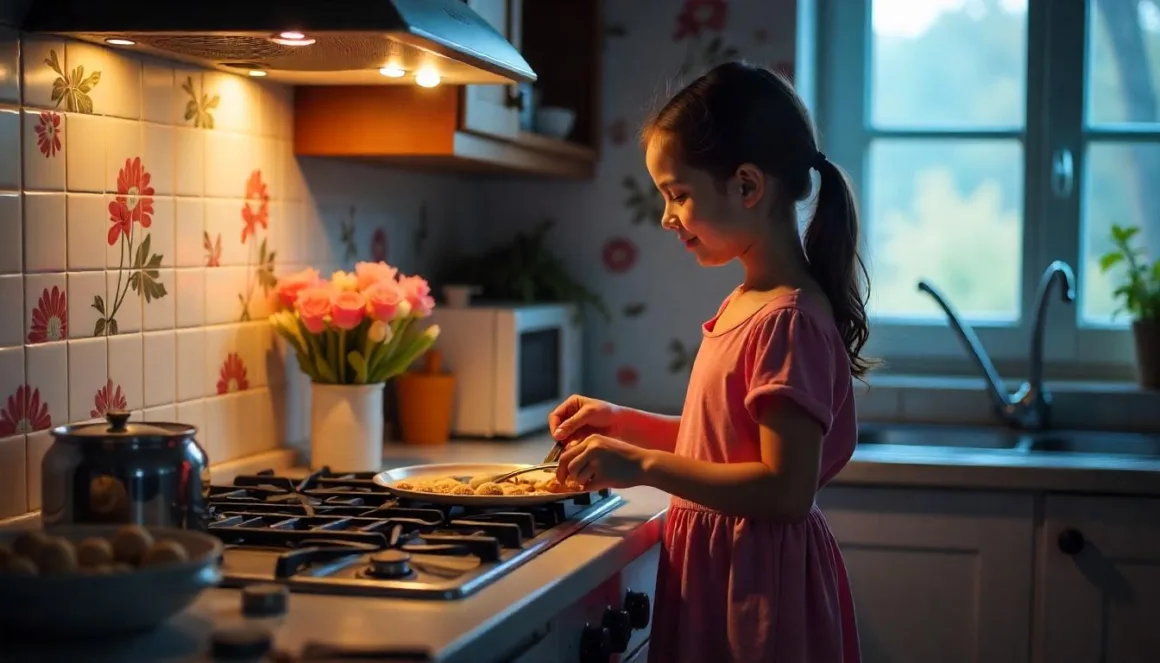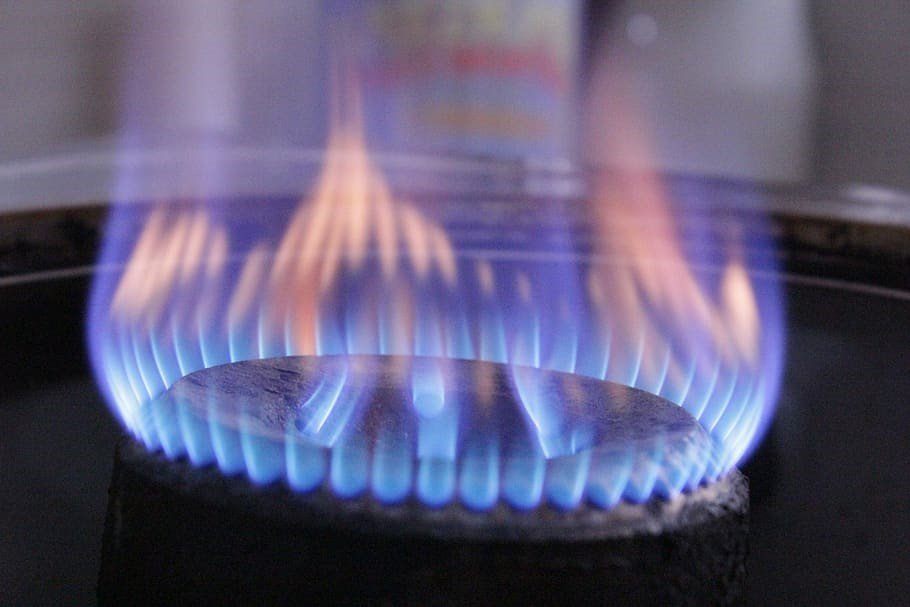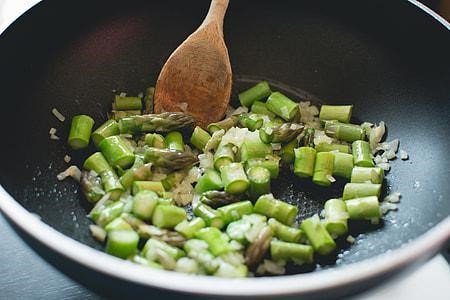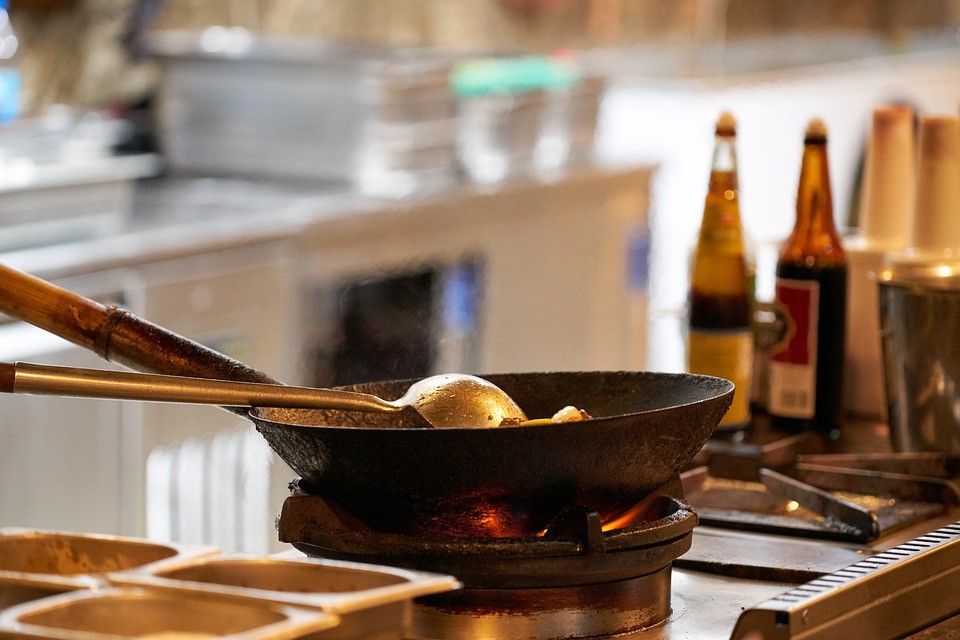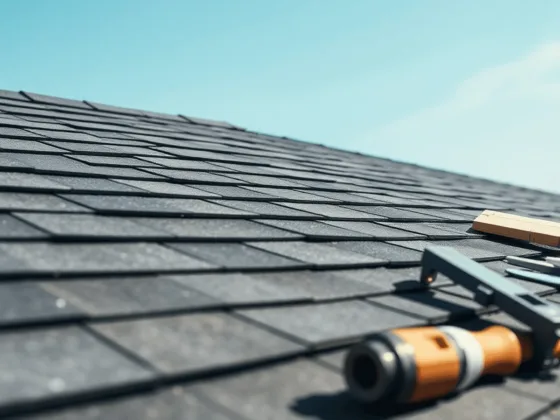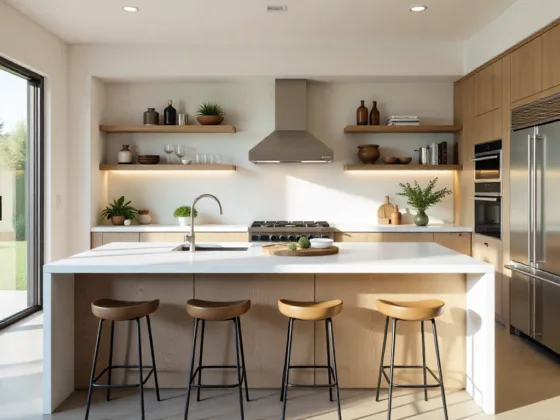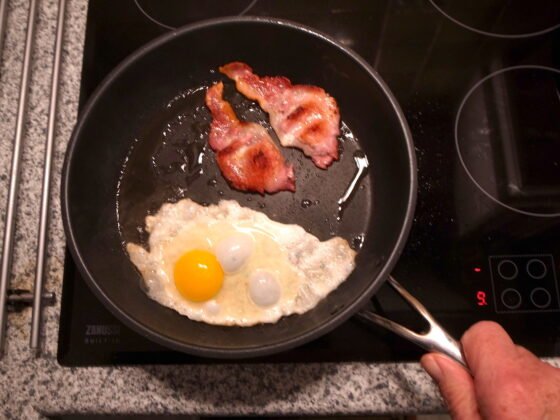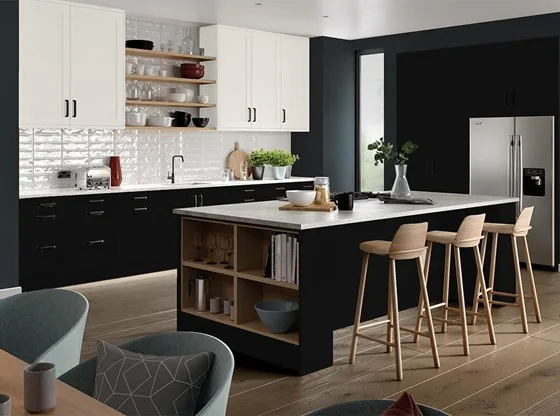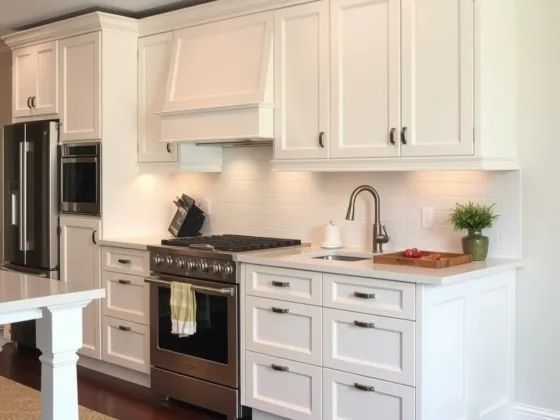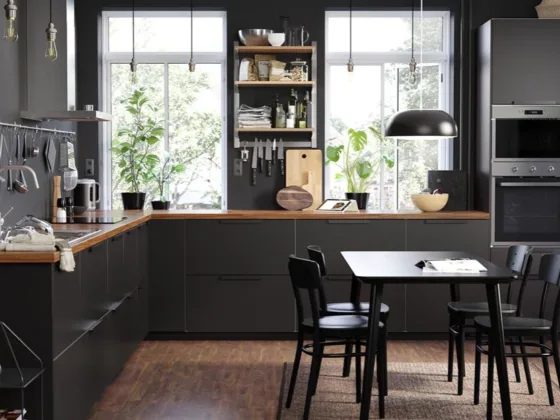Table of Contents Show
Cooking gas is the need of every household and is always high in demand. With the rising prices of cooking gas, families are using microwaves and induction stoves to reduce the consumption of gas. However, despite the rising prices of cooking gas, it is the primary source of cooking food in every household.
Therefore, it becomes essential to make the optimal use of cooking gas to reduce its consumption and make the barrel last longer. Many people waste gas due to a lack of awareness and lead to high utility bills. They should check the food blog for the tips and tricks to use the cooking gas efficiently.
Every family needs to save the consumption of cooking gas. Let us explore some tips to save cooking gas in the kitchen.
Keep Your Stove Burners Clean
Clean burners help your stove work better. Food and grease can build up on burners over time and block gas flow. Clean them regularly to keep them working well.
1. Watch the Flame Color
Look at the flame when you turn on your stove. A good flame should be blue. This shows the gas is burning properly. A blue flame with a tiny yellow tip is fine, but yellow, orange, or red flames mean there’s a problem.
2. Bad Burning Means Wasted Gas
Yellow or red flames mean the gas isn’t burning fully. This wastes gas and can create dangerous carbon monoxide. These odd flame colors happen when dirt blocks the gas holes, stopping gas from mixing with air properly.
3. Keep Gas Burning Right
Clean burners let gas flow and mix with air correctly, making a blue flame. This uses gas better, saves money, and keeps your kitchen safe.
How to Clean Burners:
- Turn off stove and let it cool
- Take out burner parts
- Clean with a brush or wire
- Use soap and water if needed
- Dry completely before putting back
Clean your burners monthly to keep flames blue and steady.
Why Clean Burners Matter
Clean burners help your stove work safely and save gas. Blue flames mean everything’s working right. Yellow or orange flames waste gas and can be dangerous. Regular cleaning keeps your stove working its best.
Read Also:
Save Gas by Drying Your Cooking Utensils
Always dry your cooking pans and pots before putting them on the stove. Wet cookware wastes gas because the heat first has to dry the water before cooking your food.
This small waste adds up when you cook several times a day. Over time, you’ll use more gas than needed and pay higher bills.
Why It Matters
Dry cookware heats up faster than wet cookware. When your pots and pans are dry, all the heat goes straight to cooking your food instead of drying water first.
How to Do It
Just wipe your cookware with a clean cloth before cooking. This quick step takes seconds but saves gas every time you cook. If you cook often, these small savings build up to lower gas bills over time.
Remember
This simple habit of drying your cookware before cooking helps you use less gas and save money. It’s an easy way to cook more efficiently every day.
Get Ready Before You Cook
Getting ingredients ready before cooking helps save gas in the kitchen. Many people turn on the stove before they have everything ready. They might cut vegetables or get spices while the stove is on, which wastes gas.
When the stove is on while you’re still getting things ready, you’re burning gas for no reason. If you’re cutting food or mixing spices with the flame on, you’re wasting fuel.
The Better Way: Get Everything Ready First
Instead, get all your ingredients ready before cooking. Cut your vegetables, measure your spices, and have everything set before turning on the stove. This way, you only use gas when you’re actually cooking.
This Helps You:
- Save gas by not leaving the stove on while getting ready
- Cook faster since everything’s ready to go
- Use less time overall
Example: Making a Stir-Fry
When making a stir-fry:
- Cut all vegetables first
- Get your sauces ready
- Cook your rice
- Then turn on the stove and cook
Good for Busy Homes
This method works well if you’re busy or want to save money on gas. It also helps prevent burned food since you can focus on cooking once you start.
Use Pan Lids While Cooking
Using a lid on your pan saves gas and cooks food faster. The lid keeps heat inside instead of letting it escape into the air. This means food cooks more quickly and uses less gas.
Why Use Lids?
- Cook Faster: Steam gets trapped inside, cooking food more evenly and quickly. Foods like rice and beans cook better with a lid because the temperature stays even.
- Clean Less: Covered pans mean fewer spills and less stuck-on food to clean up.
- Keep Food Moist: Lids keep moisture in, so meat stays juicy and tender instead of drying out.
- Save Energy: Using a lid can cut cooking time by up to 25%. This saves gas and time, especially when cooking multiple dishes.
Save Money on Gas
Covering pans is an easy way to save money on gas bills. It works for all types of cooking – from boiling pasta to making stews. For even more savings, use low heat with the lid on. Your food will cook evenly while using less gas.
Soak Your Beans and Rice Before Cooking
Soaking beans and rice before cooking makes them cook faster. Foods like kidney beans, chickpeas, lentils, and brown rice usually take a long time to cook until they’re soft.
When you leave these foods in water for several hours or overnight, they become softer as they soak up the water. This makes them easier to cook.
Soaking helps you use less energy when cooking, saving time and money on gas and electricity.
Why Soaking Helps
- Cooks Faster: Dry chickpeas usually take over an hour to cook. If you soak them first, they cook in about 30 minutes. Brown rice normally takes 45 minutes to cook but only needs 20-25 minutes when soaked.
- Saves Money: Soaking helps you use less fuel for cooking, which is especially helpful when fuel is expensive or hard to get.
- Better Food: Food becomes softer and easier to eat when you soak it first.
- Helps the Environment: Using less fuel means less pollution and lower energy bills.
How to Soak
Use lots of water – foods will get bigger as they soak. The longer you soak, the faster they’ll cook. Soaking also makes the food easier to digest and reduces gas.
This simple step makes cooking easier, faster, and saves energy.
Lower the Heat After Boiling
When your food starts bubbling, turn down the heat. Keep it at a gentle simmer where you see steady, small bubbles. This helps cook your food evenly and stops the outside from cooking too fast while the inside stays raw.
Why Turn Down the Heat?
- Keeps vegetables colorful and healthy
- Uses less gas and saves money
- Stops food from spilling over
- Cooks food gently and well
Cooking on low heat works best for many foods, especially soups and stews. It keeps food from breaking apart and helps everything cook just right.
When water boils, turning down the heat is a simple but smart move. It saves energy, keeps nutrients in your food, and prevents spills. While it might seem like a small thing, it helps you save money and make better meals.
Save Gas with a Pressure Cooker
A pressure cooker is a great way to save gas when cooking. Food cooks much faster in it than in regular pots.
How It Works
The cooker keeps steam inside, making water hotter than usual. This cooks food faster. For example, beans that take an hour in a normal pot cook in 20-30 minutes. Tough meat also gets soft quicker.
Why It’s Good
- You’ll use less gas, which saves money on bills.
- Cooking takes less time, so you waste less energy.
- You also spend less time cooking, which is better for you and the environment.
How It Helps at Home
Many families find their gas lasts longer when they use a pressure cooker. This is very helpful when gas is hard to get or costs a lot.
Using a pressure cooker is a good way to save money and cook better. It makes cooking faster, simpler, and cheaper.
Use Wide Pots and Pans to Save Gas
Wide pots and pans help you use less gas when cooking. Small, narrow cookware might be easier to store, but they waste more gas.
1. Why Small Pots Waste Gas
When you use a small pot, the flame often spreads out around the sides instead of heating the bottom. This wastes gas because the heat isn’t going into your food. You then need to cook longer or use a higher flame.
2. Why Wide Pots Save Gas
Wide, flat pots work better because they catch all the heat from the burner. The flame heats the whole bottom evenly, so food cooks faster and uses less gas. No heat escapes around the sides.
Benefits of Wide Cookware
Using wide pots and pans means:
- Faster cooking
- Less wasted heat
- Lower gas bills
- More even cooking
For example, water boils faster in a wide pot than a narrow one. Over time, this saves both gas and money.
Tips for Choosing Cookware
Pick pots and pans that match your burner size and the amount of food you’re cooking. Wide, flat cookware is best for most cooking tasks, especially if you cook for a family or cook often.
Using the right size pot or pan is an easy way to save money and help the environment.
Cook Your Vegetables Once a Day
Instead of cooking vegetables several times a day, cook them all at once. For example, boil carrots and potatoes together in the morning and keep them in the fridge for later meals. Just reheat them when needed.
This saves money because:
- You only turn on the stove once
- You use less gas or electricity
- You spend less time cooking
- Your stove lasts longer
Most cooked vegetables stay good in the fridge for 1-2 days. Store them in covered containers to keep them fresh. You can cook enough for several meals – like a pot of greens with beans and a vegetable stir-fry that lasts 2-3 days.
To make this work:
- Plan your meals ahead
- Cook larger amounts at once
- Store food properly
- Reheat only what you need
This method works with any type of stove. Many people save 20-30% on their gas or electric bill by cooking vegetables just once a day. It’s an easy way to save money and time while still eating well.
How Long to Cook Your Food
Learn the right cooking time to save gas and make better food. Many people cook too long or not long enough, which wastes gas and ruins food.
Different foods need different cooking times:
- Broccoli: 3-5 minutes when boiled or steamed
- Carrots and potatoes: 15-20 minutes
- Meat like chicken and beef: varies, but needs exact timing
Save Money on Gas
Knowing cooking times helps you spend less on gas and cook better food. Use your phone’s timer to remember when to turn off the stove. This stops food from overcooking and saves gas.
Get Better with Practice
- Start with recipe times as a guide
- Keep notes on what works for you
- Make a list of cooking times for foods you often cook
- Use timers to help you remember
With practice, you’ll know exactly when food is done. This makes cooking easier, saves money, and gives you better results.
Look for Gas Leaks
Check your stove, pipes, and gas parts often for leaks. Even small leaks can be dangerous and waste money.
- Finding Leaks: Gas has a strong, bad smell to help you notice leaks. If you smell gas, take it seriously – it means there’s a problem.
- Why Leaks are Dangerous: Even tiny leaks can start fires or explosions if not fixed. They also make your gas bills higher.
- When to Look for Leaks: Check whenever parts look old or damaged. Look closely at where pipes connect and watch for cracks.
- What to Do About Leaks: Don’t try to fix gas leaks yourself. Call a professional to fix them safely.
- Why Regular Checks Matter: Checking often helps find problems early. This keeps you safe and saves money.
Stay safe – check for leaks regularly and fix problems right away.
Use LPG from a Reputed Supplier
Some gas suppliers fill less gas in their barrels to save money. However, customers never know about the low amount of gas as a small amount doesn’t make a significant difference in weight. Therefore, you should use the gas barrel from a certified and reputed supplier.
PlugGas is a reputed gas supplier and distributor in Queensland. The supplier is based in Queensland but serves across Brisbane, Gold Coast, Ipswich, and Toowoomba.
PlugGas has managed to build a good reputation by offering world-class customer service in these areas. Visit their website to know about their services.
Final Words
Now, as you know about the tips to save cooking gas, you can save it for your family and guide others about the same.
Saving the cooking gas may not make a big difference every day, but it can save you money over the months. A small saving of gas every day can make the barrels last longer and save gas as well as money.
FAQs
Some simple ways to reduce cooking gas usage include using lids on pots, cooking with flat-bottomed cookware, and keeping the flame at the right size for the pot. Additionally, using a pressure cooker can significantly reduce cooking time and gas consumption.
To improve the efficiency of your gas stove, make sure the burners are clean and properly adjusted. Use cookware that matches the size of the burner and avoid using oversized pots on small burners, as this can waste energy.
Yes, the type of cookware you use can affect gas consumption. Flat-bottomed pots and pans are more efficient on gas stoves as they make better contact with the burner, leading to faster cooking and less wasted energy.
Yes, cooking in bulk can save on cooking gas. Preparing larger quantities of food at once reduces the amount of time your stove needs to be on, thus conserving gas usage over time.
In some cases, using an oven can save gas, especially for larger meals that require longer cooking times. However, for smaller cooking tasks, a stovetop might be more efficient. It’s important to consider the size and type of meal you are preparing when deciding which method to use.
